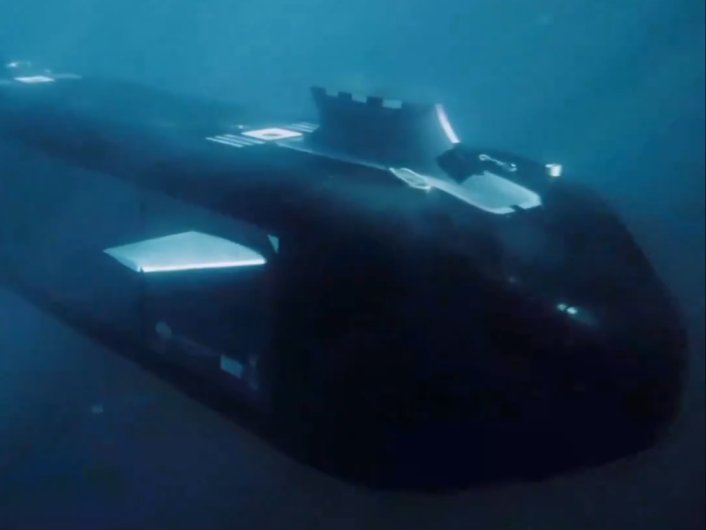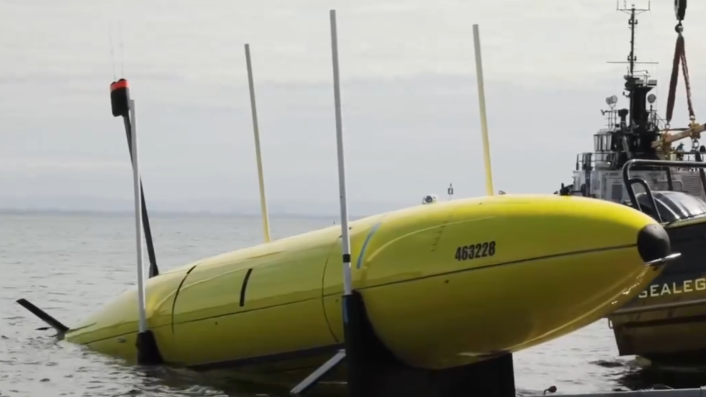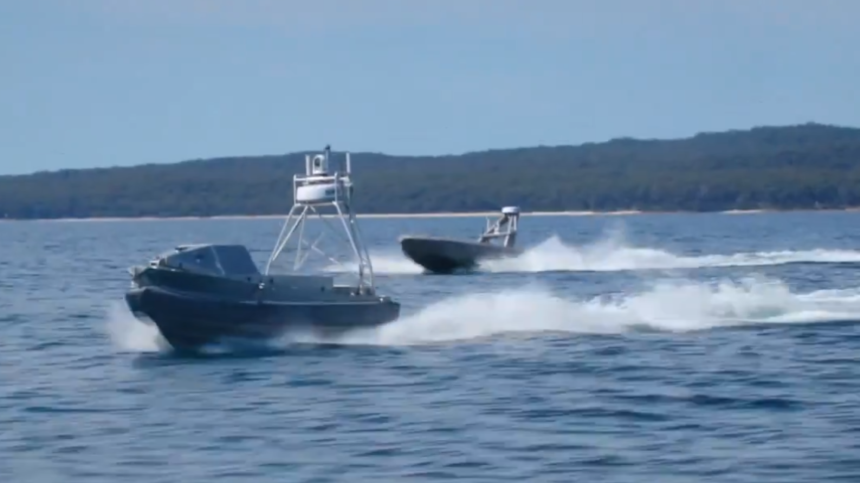AUKUS countries are advancing their undersea warfare capabilities by expanding the ability to launch and recover uncrewed underwater systems from torpedo tubes on British and US submarines, increasing the range and capabilities of their undersea forces.
Countries of the AUKUS alliance (Australia-United Kingdom-United States) fielded and tested, late in October, a wide variety of unmanned sea and aerial systems to experiment, co-develop, and collaborate on possibly rapidly operationalizing maritime drones under the Pillar 2 Maritime Big Play initiative. Called Autonomous Warrior 2024, the exercise is part of a series of trilateral experiments and exercises and saw the militaries and defense industries demonstrating their respective systems.
While AUKUS Pillar 1 focused on delivering an advanced nuclear power submarine capability to Australia, Pillar 2 is geared towards the “development and delivery of emerging technology,” exploiting the “combined industrial and innovation bases of the trilateral partners” to deliver “cutting edge interoperable military capabilities.”
Systems used
A video, posted by Australia’s ambassador to the U.S. Kevin Rudd, showed the GARC and Sea Stalker USVs (Unmanned Surface Vessels) in action, a Ghost Shark XLUUV (Extra Large Unmanned Underwater Vehicle) and balloons being launched for sensing purposes. The War Zone reported that the RAN (Royal Australian Navy) is the first customer of the Ghost Shark, developed by Anduril.
The UK’s Stingray lightweight torpedo was also usedby a P-8A Poseidon MPA and ASW (Maritime Patrol and Anti-Submarine Warfare aircraft). A DoD (Department of Defense) statement said the systems employed included software-defined acoustic modems, multi-model autonomous underwater and low-cost attritable unmanned surface vessels.
AUKUS Pillar Il is delivering cutting edge autonomous maritime technology.
The Maritime Big Play in Australia has showcased next generation AUKUS technologies that will support operations from deep under water to the edge of space. pic.twitter.com/3q9Z26rjyw
— Kevin Rudd AC (@AmboRudd) October 25, 2024
They comprised a low-cost gondola, which supports operations in the upper stratosphere with minimum manpower or logistics requirements; T-200 high-altitude balloons for resilient communications in denied environments from the stratosphere; a versatile and robust software-defined network architecture called Multi-Domain Uncrewed Secure Integrated Communications (MUSIC) for enabling seamless communication and coordination across unmanned systems and operational environments; and an “open architecture” Common Control System (CCS) to provide uncrewed vehicles hardware and software that works across several different systems.
Other reports quoted a DoD official who identified a few other systems. These included the GARC (Greenough Advanced Research Craft), a low-cost attritable USV that can deploy independently or as formation; an ISR-oriented Sea Stalker USV from Louisiana-based Swift Ships; and the Triton multi-model Autonomous Underwater and Surface Vessel for persistent operation in contested environment with threat detection and evasion capabilities developed by Ocean Aero based in Mississippi.

‘Integrate industries, systems for rapid induction and operationalization’
Madeline Mortelmans, the U.S. Assistant Secretary of Defense for Strategy, Plans and Capabilities, said in a statement, “AUKUS presents a unique opportunity for Australia, the United Kingdom and the United States to foster a more capable, more combined force of the future.”
The alliance is “working across the full spectrum of capability development, generating requirements, co-developing new systems, deepening industrial based collaboration and ultimately delivering advanced capabilities to our forces.”
Pillar 2 has seen the countries “advancing our undersea warfare capabilities by expanding our ability to launch and recover uncrewed underwater systems from torpedo tubes on current classes of British and US submarines, that will increase the range and capability of our undersea forces,” added Mortelmans.
The integration of the Stingray on the P-8A is part of an effort to achieve interchangeability, integrating systems of the three nations to build “resilience” to munitions stockpiles in the AUKUS nations. The effort is supervised by the I-JROC (International Joint Requirements Oversight Council) to “identify and validate joint and combined requirements…and solutions…from the very start,” for the capabilities developed under Pillar 2.

Maritime Big Play
At Jervis Bay in Australia late in October, the integrated trilateral experiments and exercises aimed at “improving interoperability and increasing the sophistication and scale of autonomous systems in the maritime domain.” The experiments focused on the use of autonomous and AI-enabled systems. This year, Japan also joined the Maritime Big Play as an observer.
“We’ve been testing and refining the ability to jointly operate uncrewed maritime systems, to share and process maritime data from all three nations, and to provide real time maritime domain awareness,” the statement added.
Maritime Big Play allowed AUKUS partners to practice fielding and maintaining thousands of uncrewed systems, and solve “realistic operational problems such as improving undersea situational awareness.” Partner countries learnt how crewed and uncrewed capabilities can be integrated to get an operational advantage, while saving cost through efficient acquisition, maintenance and sustainment processes.
Harnessing technology is critical for the future of Defence capability. #ExAutonomousWarrior demonstrates the technical ingenuity of #YourADF who are working closely with our AUKUS partners to solve collective problems in the maritime domain. pic.twitter.com/k4eOvKuKE5
— Admiral David Johnston (@CDF_Aust) October 28, 2024
What comprised the exercise?
A separate statement said the AUKUS partners “tested and refined their ability to jointly operate uncrewed maritime systems, share and process naval data, and provide real-time maritime domain awareness in support of decision-making.”
Various private sector companies exhibited technologies and equipment that could be evaluated by all three nations as part of scenarios created for the event. These included “autonomous air, surface and sub-surface vessels, balloons and networking systems.”
The statement also quoted a defense official who cited specific scenarios like “very large area ISR” and maintaining a “common operating picture” with the use of uncrewed systems. The thrust on interoperability is also meant to reduce the “weeks or months” required to “integrate new capability into existing systems” when “partners bring in new equipment.”









